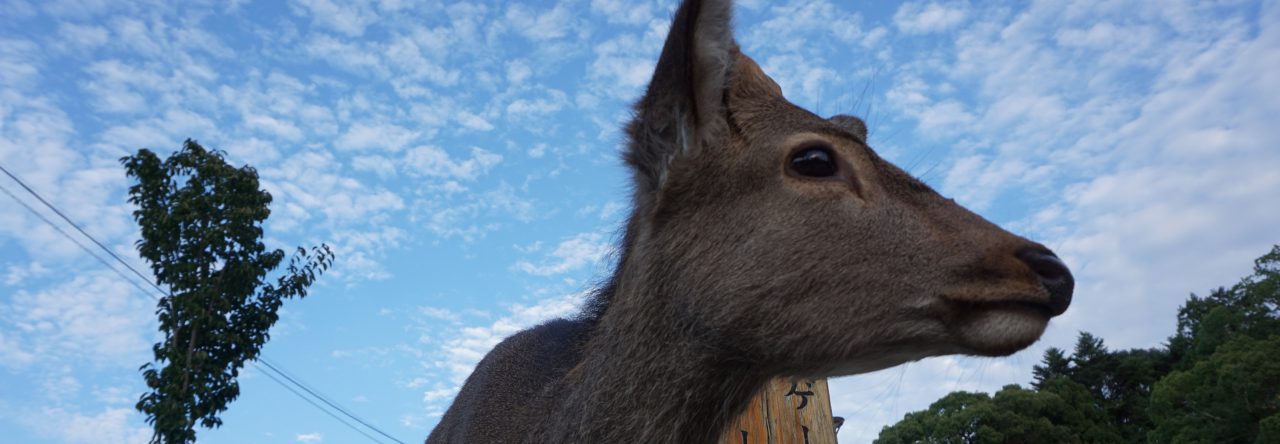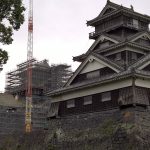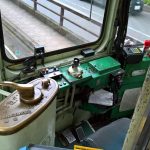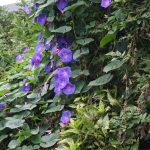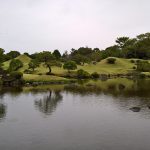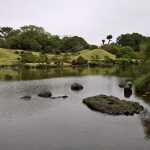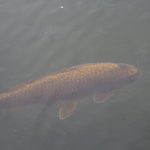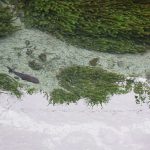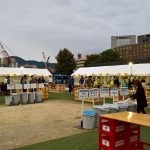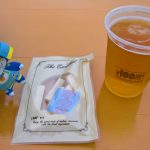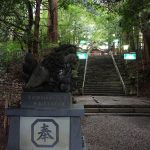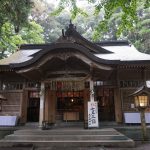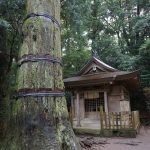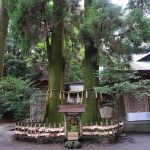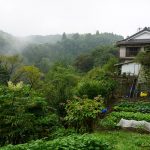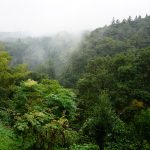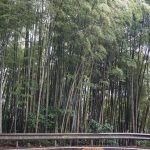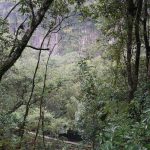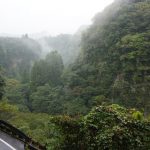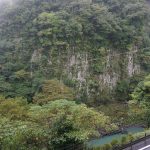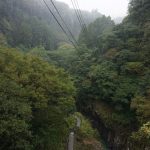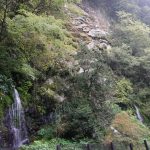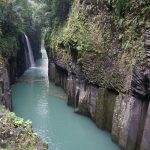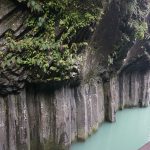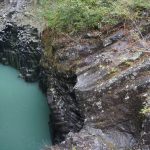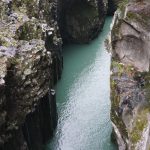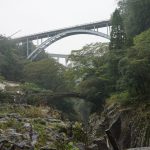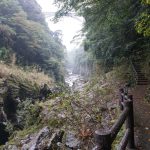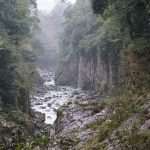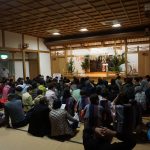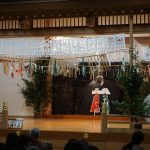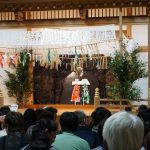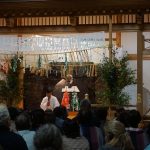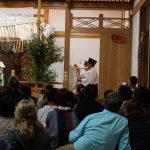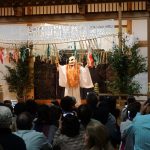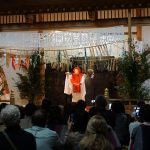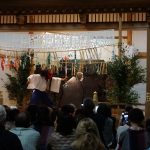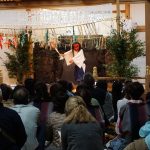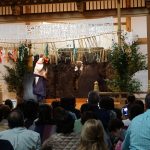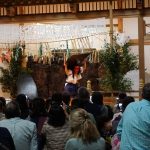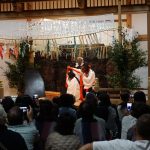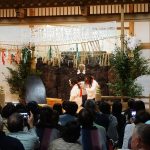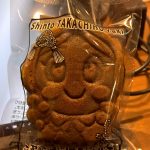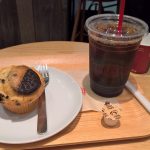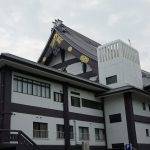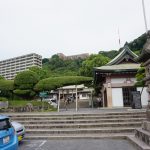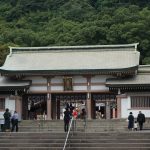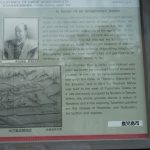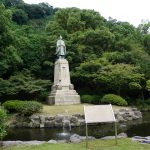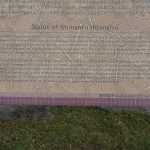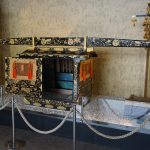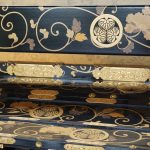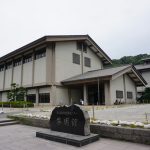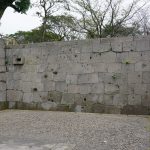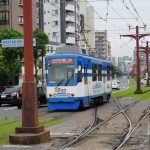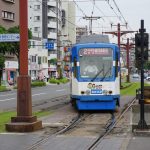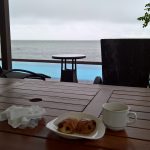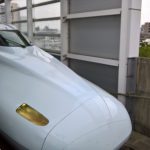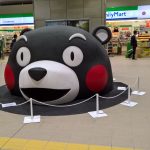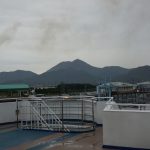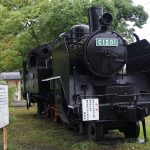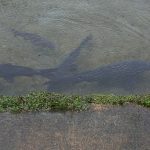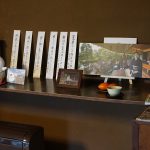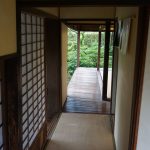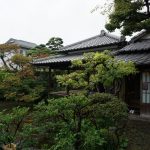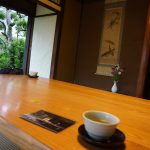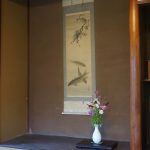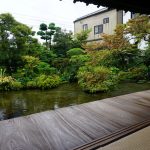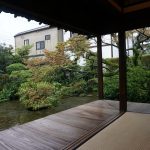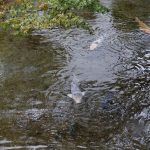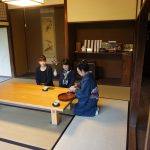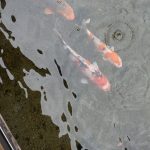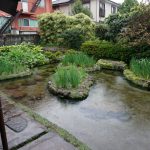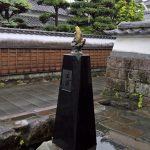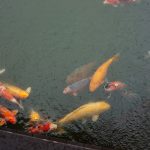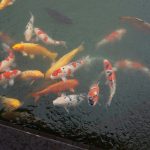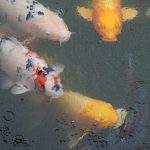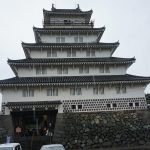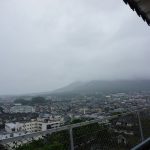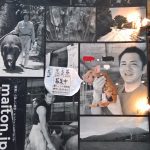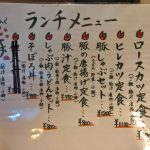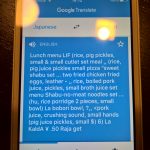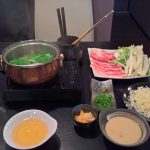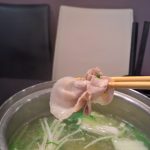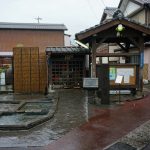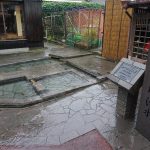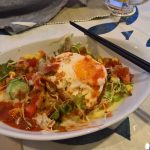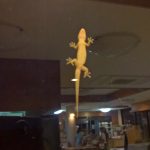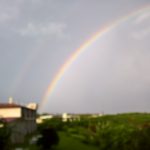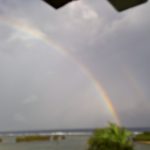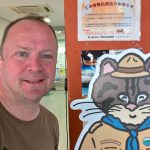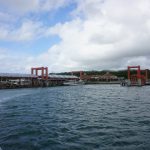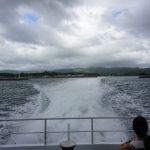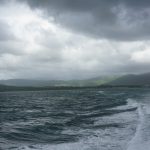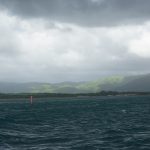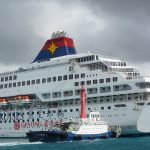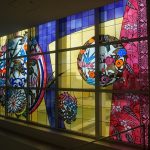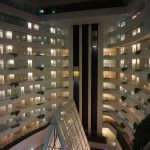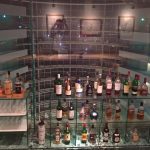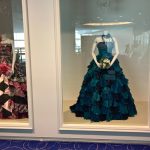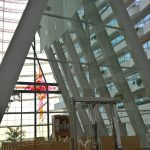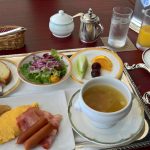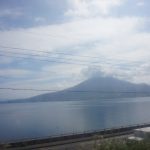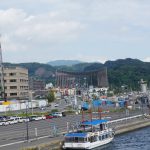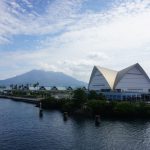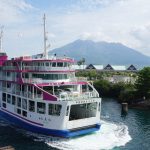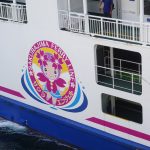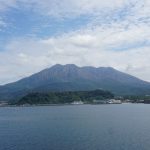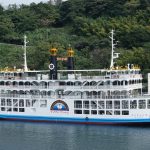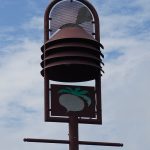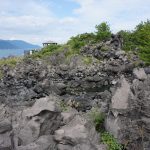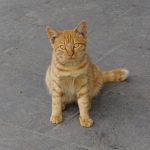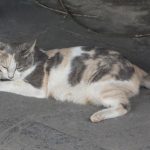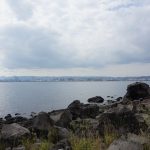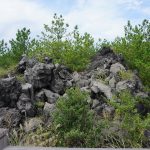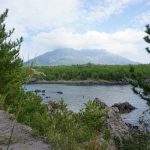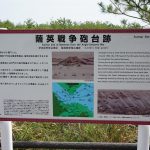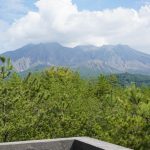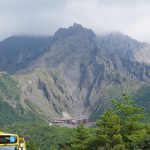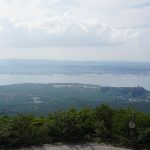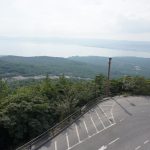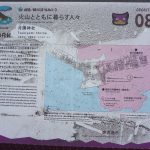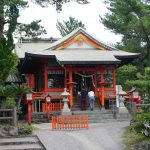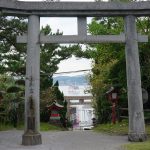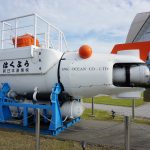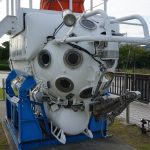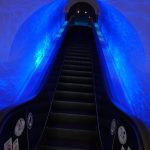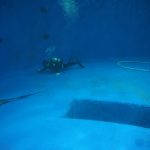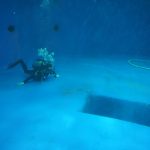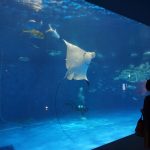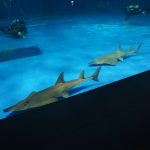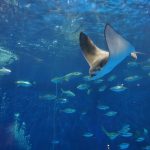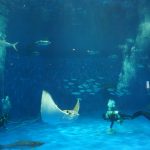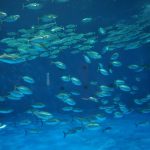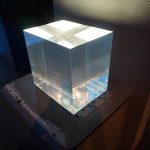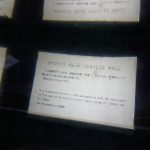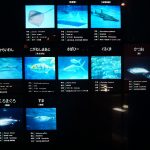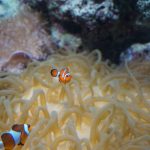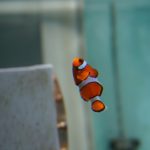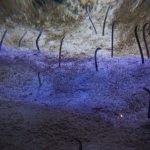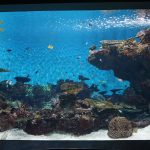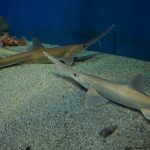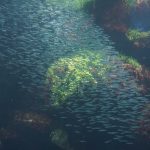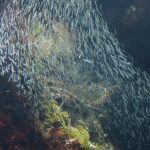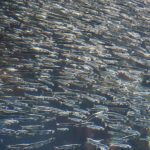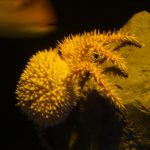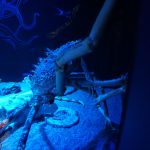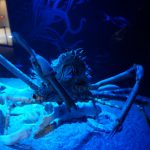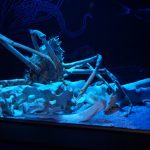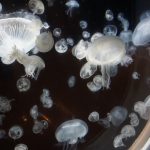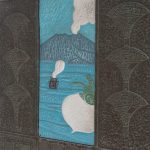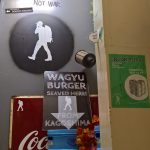Monday 16th
Started the day sitting in the ferry port café with an iced coffee, listening to a radio station playing just Beatles songs – originals and covers (including some in Japanese…). Slower ferry back to Kumamoto this time.
When I disembarked, there was a Japanese man with a sign saying ‘free shuttle bus to Kumamoto Station’. He was a tourist guide and driver, and he was learning English – at 63! Very helpful, and very pleased that I was visiting from England. As with a lot of this trip, since it wasn’t really peak season and I was going off the beaten track a lot, I wasn’t seeing many Westerners at all.
Got to the hotel and found Kumamon, hard at work in his office. Couldn’t check in until 3pm, so dropped off my bags and went for a stroll around the castle. Pleased to see that the reconstruction work has really picked up speed, lots of scaffolding and frameworks up around the main two towers, and work on the walls progressing well. Still a very long project though – I think they said a 20 year rebuild schedule. Stopped for ice coffee, and an amazing ice cream parfait with a coffee jelly – tasty stuff.
So to dinner – went to Ramen Red Team again (visited there last time I was in Kumamoto), still awesome. The roasted garlic oil that they add just gives an amazing flavour. Then on to Voyager for American Citra IPA, and chats with Akira the barman, and a regular who’s an Anglophile – fan of Mod and Punk fashions, works as a ‘hair designer’. Told him I was beyond being designed.
Tuesday 17th
 Started the day by walking over to where I would catch the highway bus out to Takachiho the following day. Spotted an interesting sign – 100 yen beer festival – after some research online found that it would be on that afternoon and evening, resolved to head back there. Took a photo of one of the buildings in an area of nightclubs and bars, and wondered how they all stay in business.
Started the day by walking over to where I would catch the highway bus out to Takachiho the following day. Spotted an interesting sign – 100 yen beer festival – after some research online found that it would be on that afternoon and evening, resolved to head back there. Took a photo of one of the buildings in an area of nightclubs and bars, and wondered how they all stay in business. 
You have an area of multiple buildings, each with a club or bar on every floor – sometimes two. As I understand it, many of these can only hold a dozen or so customers, so I can only assume the ones that survive do so because they have dedicated regulars. Always intrigues me.
As the weather had improved and it looked like no more rain for the day, spent half an hour riding one of the tramlines out to the end of its line, so that I could walk back along the river and through parks. As part of the Japanese fascination with all things train related, they like to run well maintained old trams as well as modern ones – this one had the original wooden flooring and lovely brass instrument panels. In preparation for my stroll, I picked up an apple to keep me going. Now, it’s not always easy to find fresh fruit in the convenience stores, so finding a little grocers was great. One thing though about their fruit – it’s usually perfect with no blemishes or imperfections, it’s expensive, and can be very big. For about £1 I got an apple the size of a large grapefruit – I’d say it weighed about the same as 3 ordinary sized ones – and was something of a challenge to eat, but absolutely delicious.
- The Big Apple (😁)
 I spent several hours walking back in to the centre of town, revisiting the lovely Suizenji garden on my way. In the first park, spotted some amazing purple blooms – on closer inspection it was actually bindweed, but where as in the UK it’s usually white flowers, these were an incredible deep purple. Suizenji ponds had their usual array of koi carp. Now one thing about what we would call ‘goldfish’ – there more orange than gold. I spotted one lovely specimen that actually was gold…
I spent several hours walking back in to the centre of town, revisiting the lovely Suizenji garden on my way. In the first park, spotted some amazing purple blooms – on closer inspection it was actually bindweed, but where as in the UK it’s usually white flowers, these were an incredible deep purple. Suizenji ponds had their usual array of koi carp. Now one thing about what we would call ‘goldfish’ – there more orange than gold. I spotted one lovely specimen that actually was gold…
Got back to the beer fest to find it not quite what I expected. There was only one beer (Asahi), and a small was 100yen or a ‘large’ (not much more than a half pint) for 200 yen. The ‘competition’ was actually around all the food stalls – all foods perfect to go with a beer, from chicken karaage (Japanese fried chicken) and noodles, to snacks like the amazing cheese simply named “The Excellent”.
One thing struck home as I browsed – I really could do with being able to read Japanese. It feels like a world denied, but such a high bar to enter. Or I need a better translation app… as I walked back from the fest, spotted another election campaign van and managed to grab a video. Loving the dude’s pink suit, and the rather hysterical tone of the announcer:
Wednesday 18th
 Early start to catch the highway bus to Takachiho. Great views en route as we drove up into the mountainous landscapes around Aso – a massive volcanic caldera that has towns and farms within the 25km wide rim. Sadly can’t hike up to the active volcano still, as they still have a level 1 warning for eruption risk after the earthquake and subsequent volcanic activity.
Early start to catch the highway bus to Takachiho. Great views en route as we drove up into the mountainous landscapes around Aso – a massive volcanic caldera that has towns and farms within the 25km wide rim. Sadly can’t hike up to the active volcano still, as they still have a level 1 warning for eruption risk after the earthquake and subsequent volcanic activity.
Spotted some more interesting English along the way. Sections of an outdoor market with signage stating: “Fruit. Vegetable. Meet”. Then a bakery: “The new framework of bread” – interesting.
 Long drive through coniferous forest and mountain passes. Small towns here and there, rice paddies still not harvested in places. Reached Takachiho after two and half hours, and took a taxi to the hotel – raining again today… Dropped my bags and walked to the tourist info to get maps, then walked over to the shrine at the head of Takachiho Gorge.
Long drive through coniferous forest and mountain passes. Small towns here and there, rice paddies still not harvested in places. Reached Takachiho after two and half hours, and took a taxi to the hotel – raining again today… Dropped my bags and walked to the tourist info to get maps, then walked over to the shrine at the head of Takachiho Gorge.
Takachiho: there’s lots of information on the local tourism website linked here. “Steeped in myth and legend, Takachiho has been known since ancient times as a sacred ground where the gods descended to earth. The area is also famous for yokagura, sacred dance rituals reenacting the legends, which are performed in the fall and early winter.”
From the Rough Guide to Japan:
“Takachiho’s famous traditional dances have their roots in local legend. The story goes that the Storm God, Susano-ō, once destroyed the rice fields of his sister, the Sun Goddess Amaterasu, and desecrated her sacred palace. Understandably offended by these actions, Amaterasu hid in a cave and plunged the world into darkness. The other gods tried to entice her out with prayers and chants, but nothing worked until, finally, a goddess named Ama-no-uzume broke into a provocative dance. The general merriment was too much for Amaterasu, who peeped out to see the fun, at which point the crowd grabbed her and hauled her back into the world.
Takachiho locals also claim that nearby mountain Takachiho-no-mine – not the mountain of Ebino Kōgen – is where Amaterasu’s grandson, Ninigi-no-mikoto, descended to earth with his mirror, sword and jewel to become Japan’s first emperor.
A visit to Takachiho is not complete without viewing a sample of this dance at the Kagura-den (see Takachiho-jinja). In one hour you see three or four extracts from the full cycle, typically including the story of Amaterasu and her cave, and ending with an explicit rendition of the birth of the Japanese nation in which the two “gods” leave the stage to cavort with members of the audience – to the great delight of all concerned. The performers are drawn from a pool of around 550 local residents, aged from 5 to 80 years, who also dance in the annual Yokagura festival (mid-Nov to mid-Feb). In a combination of harvest thanksgiving and spring festival, 24 troupes perform all 33 dances in sequence in private homes and village halls, lasting through the night and into the next day.”
 The sheer gorge running through a basin surrounded by steep green mountains is the highlight of a magnificently variegated terrain that presents fresh beauties with the changing seasons. Hiked down the road leading into the gorge. Spectacular scenery, with hexagonal basalt columns forming the cliffs along the river. Sadly the rain had risen the river level, and for safety reasons it wasn’t possible to hire row boats to view the gorge from underneath.
The sheer gorge running through a basin surrounded by steep green mountains is the highlight of a magnificently variegated terrain that presents fresh beauties with the changing seasons. Hiked down the road leading into the gorge. Spectacular scenery, with hexagonal basalt columns forming the cliffs along the river. Sadly the rain had risen the river level, and for safety reasons it wasn’t possible to hire row boats to view the gorge from underneath.  After some refreshments (where it seems they don’t like Pokémon Go) , walked the gorge path which winds along crossing back and forth across the river a few times.
After some refreshments (where it seems they don’t like Pokémon Go) , walked the gorge path which winds along crossing back and forth across the river a few times.
Spotted the biggest carp ever – this thing was huge, I’m amazed the ducks went anywhere near it. Final part of the walk takes you back up through the forest to the shrine again – strenuous and steep, proper workout.
- Takachiho Shrine
Back to the hotel to grab some food and change, then took a cab back out to the shrine where they hold one hour evening performances of the Yokagura dances. In the winter these dances are held every weekend, and can go on long into the night – different groups take turns to perform, at village venues and private houses. Throughout the year, these evening performances are held every night for tourist visitors – as you can see from the photos, the turnout was good.
The dance which was performed for us started by depicted Tajikarao, the deity of power, finding Amaterasu’s cave and using his great strength to remove the door. A fascinating experience, and a real example of how the Japanese preserve their ancient cultures.
- Amaterasu as sponge cake with sweet red bean filling
